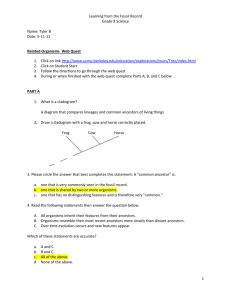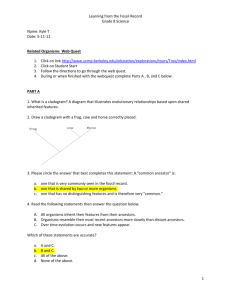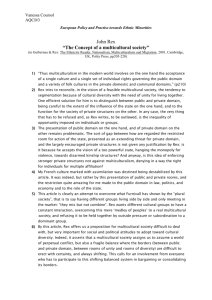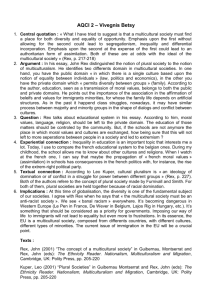Special Assignment: Solving T. rex`s Identity Crisis
advertisement
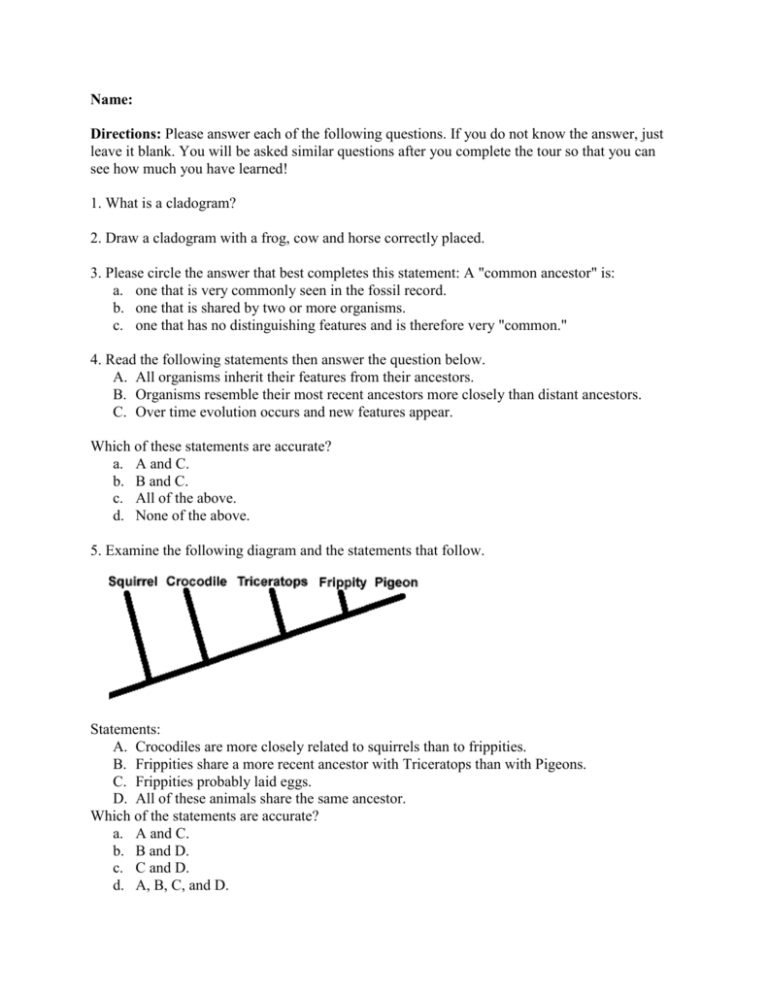
Name: Directions: Please answer each of the following questions. If you do not know the answer, just leave it blank. You will be asked similar questions after you complete the tour so that you can see how much you have learned! 1. What is a cladogram? 2. Draw a cladogram with a frog, cow and horse correctly placed. 3. Please circle the answer that best completes this statement: A "common ancestor" is: a. one that is very commonly seen in the fossil record. b. one that is shared by two or more organisms. c. one that has no distinguishing features and is therefore very "common." 4. Read the following statements then answer the question below. A. All organisms inherit their features from their ancestors. B. Organisms resemble their most recent ancestors more closely than distant ancestors. C. Over time evolution occurs and new features appear. Which of these statements are accurate? a. A and C. b. B and C. c. All of the above. d. None of the above. 5. Examine the following diagram and the statements that follow. Statements: A. Crocodiles are more closely related to squirrels than to frippities. B. Frippities share a more recent ancestor with Triceratops than with Pigeons. C. Frippities probably laid eggs. D. All of these animals share the same ancestor. Which of the statements are accurate? a. A and C. b. B and D. c. C and D. d. A, B, C, and D. Go to: http://www.ucmp.berkeley.edu/education/explorations/tours/Trex/index.html (or through Ms. Julien’s website) and click on Student Start Folder 1 Quiz 1. Lineage might have been a new term for you. Which is the best definition for lineage? a. A single line showing age. b. A continuous line of descent. c. A set of parallel lines 2. Within this folder, you compared the history of a single family to the history of all life. What are some things that they have in common? a. Both have a point of common ancestry. b. In both, descendents inherit features from previous ancestors. c. In both, descendents more closely resemble their recent ancestors than more distant ancestors. d. All of the above. e. None of the above. Folder 2 1. Label distinct history, shared history, common ancestor. 2. Label the area that shows the best common ancestor of tuna and parrot. 3. 3. Label the most recent common ancestor of A and C. B and C. 4. Label the shared history of A, B, and C. 5. Label the unique history of B. Folder 3 1) Which is more closely related to caimans—hares or parrots? a) Hares b) Parrots 2) Cladograms represent _________________ about evolutionary _________________—who is more closely related to whom. 3) Fill in the table by listing and describing the derived trait for each letter. Letter Derived Trait Describe A B C D E F 4) Which feature do humans, hares, caimans, and parrots share that the other three lineages did not inherit? a) Bony skeleton b) Hair c) Amniotic egg Folder 4 1. What does the (+) mean? 2. What does the (0) mean? 3. What does the (-) mean? 4. What does a (?) mean? 5. Features Table: As you explore Folder 4, fill in the data tables below, using a +, -, or ?. 6. What evidence did we use to determine that T. rex tasted like chicken? a) T. rex's heel bone does not have a bump b) T. rex is bipedal c) T. rex has a reduced number of fingers d) a and b e) b and c 7. Because T. rex was bipedal and had a reduced number of fingers, we can infer: a) that T. rex was more closely related to birds than to crocodiles b) that T. rex and birds inherited these features from a common ancestor c) that T. rex probably shares more features with birds than with other vertebrates d) all of the above e) none of the above Special Assignment: Solving T. rex's Identity Crisis Purpose: Use the cladogram and data on inherited features to make hypotheses about what T. rex was like. Materials needed: Cladogram and Additional Data Your completed Features Table Instructions: 1) Pick two of the questions below. 2) Decide if it is possible to answer the question with the data provided (the cladogram and data tables). 3) Then answer the following based on your decision: a) If it is not possible, what information is needed to be able to answer the question? b) If it is possible, what kind of hypothesis would you make? What is the evidence for your statement? In your justification, make sure that you include information about common ancestors and shared inherited features. What other evidence would you look for that would support or refute your hypothesis? Questions: Did T. rex have an amniotic egg? Was T. rex warm-blooded or cold-blooded? Could T. rex have had feathers? Did T. rex have color vision? How many chambers were there in T. rex's heart? Did T. rex sing to its offspring? Cladogram and Data Table: Special Assignment Cladogram Below is a simple cladogram indicating the proposed relationship among the caiman, parrot, and T. rex. Additional data This data table indicates the presence or absence of eleven additional features for the caiman and the parrot. Notice that the information about the T. rex has not been filled in. You will need to make that determination based upon what you have learned.
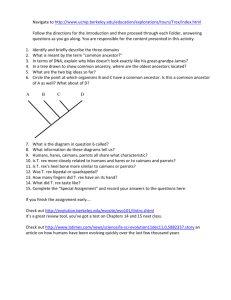
![JimmyPRelated_Organisms_Web_Quest[1]](http://s3.studylib.net/store/data/007568649_2-e16ebf3d449a5b5d84adbcd6a4c62cf6-300x300.png)

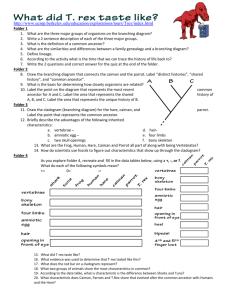
![JimmyPRelated_Organisms_Web_Quest[1][1]](http://s3.studylib.net/store/data/007482990_1-41bd1345428b2d4762896453e189954d-300x300.png)
